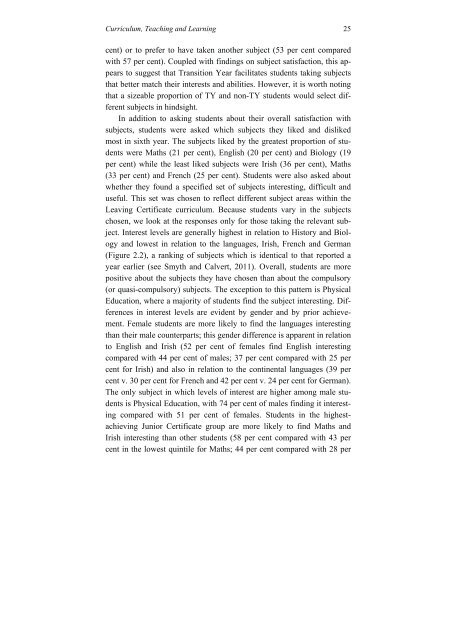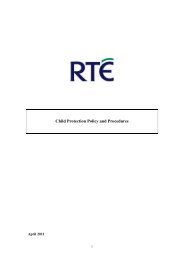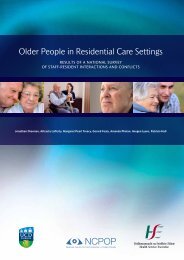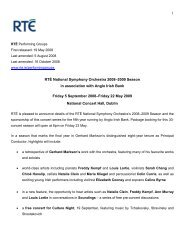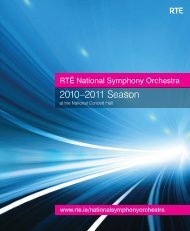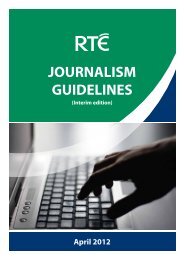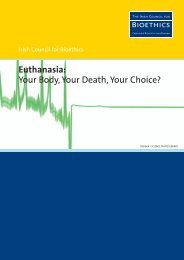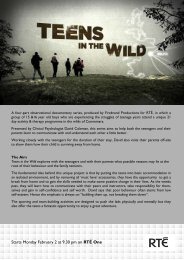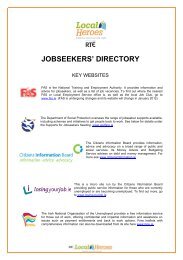From Leaving CertiFiCate to Leaving SChooL a Longitudinal Study ...
From Leaving CertiFiCate to Leaving SChooL a Longitudinal Study ...
From Leaving CertiFiCate to Leaving SChooL a Longitudinal Study ...
Create successful ePaper yourself
Turn your PDF publications into a flip-book with our unique Google optimized e-Paper software.
Curriculum, Teaching and Learning 25<br />
cent) or <strong>to</strong> prefer <strong>to</strong> have taken another subject (53 per cent compared<br />
with 57 per cent). Coupled with findings on subject satisfaction, this appears<br />
<strong>to</strong> suggest that Transition Year facilitates students taking subjects<br />
that better match their interests and abilities. However, it is worth noting<br />
that a sizeable proportion of TY and non-TY students would select different<br />
subjects in hindsight.<br />
In addition <strong>to</strong> asking students about their overall satisfaction with<br />
subjects, students were asked which subjects they liked and disliked<br />
most in sixth year. The subjects liked by the greatest proportion of students<br />
were Maths (21 per cent), English (20 per cent) and Biology (19<br />
per cent) while the least liked subjects were Irish (36 per cent), Maths<br />
(33 per cent) and French (25 per cent). Students were also asked about<br />
whether they found a specified set of subjects interesting, difficult and<br />
useful. This set was chosen <strong>to</strong> reflect different subject areas within the<br />
<strong>Leaving</strong> Certificate curriculum. Because students vary in the subjects<br />
chosen, we look at the responses only for those taking the relevant subject.<br />
Interest levels are generally highest in relation <strong>to</strong> His<strong>to</strong>ry and Biology<br />
and lowest in relation <strong>to</strong> the languages, Irish, French and German<br />
(Figure 2.2), a ranking of subjects which is identical <strong>to</strong> that reported a<br />
year earlier (see Smyth and Calvert, 2011). Overall, students are more<br />
positive about the subjects they have chosen than about the compulsory<br />
(or quasi-compulsory) subjects. The exception <strong>to</strong> this pattern is Physical<br />
Education, where a majority of students find the subject interesting. Differences<br />
in interest levels are evident by gender and by prior achievement.<br />
Female students are more likely <strong>to</strong> find the languages interesting<br />
than their male counterparts; this gender difference is apparent in relation<br />
<strong>to</strong> English and Irish (52 per cent of females find English interesting<br />
compared with 44 per cent of males; 37 per cent compared with 25 per<br />
cent for Irish) and also in relation <strong>to</strong> the continental languages (39 per<br />
cent v. 30 per cent for French and 42 per cent v. 24 per cent for German).<br />
The only subject in which levels of interest are higher among male students<br />
is Physical Education, with 74 per cent of males finding it interesting<br />
compared with 51 per cent of females. Students in the highestachieving<br />
Junior Certificate group are more likely <strong>to</strong> find Maths and<br />
Irish interesting than other students (58 per cent compared with 43 per<br />
cent in the lowest quintile for Maths; 44 per cent compared with 28 per


